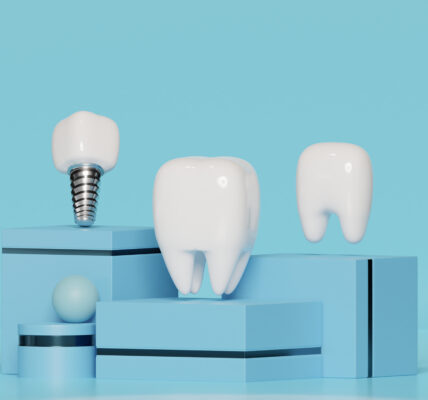Root canal treatment (RCT) has evolved significantly over the years, transforming from a procedure often associated with fear and discomfort into a more efficient, precise, and comfortable experience for patients. Advances in technology have played a pivotal role in this transformation, enabling dental professionals to perform root canals with enhanced accuracy and minimal discomfort. This article explores the key technological advancements in root canal treatment and how they are changing the landscape of endodontics.
Understanding Root Canal Treatment
Before diving into the technological advancements, it’s essential to understand what root canal treatment involves. RCT is performed to remove infected or damaged pulp from the inside of a tooth. The procedure aims to save the tooth, alleviate pain, and prevent further infection. Traditionally, RCT involves several steps, including diagnosis, anesthesia, access opening, cleaning and shaping of the canals, filling, and sealing. Each step requires precision and care to ensure the tooth’s longevity and function.
Key Technological Advances in Root Canal Treatment
1. Digital Imaging
One of the most significant advancements in dental technology is digital imaging, particularly cone beam computed tomography (CBCT). CBCT provides three-dimensional images of the tooth and surrounding structures, allowing dentists to visualize the root canal system in great detail. This technology enables:
- Improved Diagnosis: CBCT helps identify complex root canal anatomy, hidden canals, or additional root structures that may not be visible with traditional X-rays. This information is crucial for planning the treatment effectively.
- Enhanced Treatment Planning: With detailed imaging, dentists can create a more tailored treatment plan, ensuring that all areas of infection are addressed during the procedure.
2. Rotary Endodontics
The introduction of rotary endodontic instruments has revolutionized the way root canals are performed. These specialized tools use a rotating motion to clean and shape the root canals more efficiently than traditional hand instruments. Key benefits include:
- Faster Procedures: Rotary instruments can significantly reduce the time needed to complete a root canal, allowing dentists to treat more patients in a day.
- Improved Precision: Rotary instruments provide better control and precision in shaping the canals, leading to more effective removal of infected tissue and debris.
- Reduced Discomfort: The use of rotary instruments often results in less trauma to the tooth structure, reducing post-treatment discomfort for patients.
3. Laser Technology
Lasers have become an invaluable tool in modern dentistry, including root canal treatment. Laser technology offers several advantages:
- Minimally Invasive: Lasers can remove infected tissue with precision while preserving surrounding healthy tissue. This minimally invasive approach contributes to faster healing times and reduced discomfort.
- Enhanced Disinfection: Lasers are effective in disinfecting the root canal system, reducing the risk of reinfection and promoting better healing outcomes.
- Reduced Anesthesia: Many patients experience less pain during and after laser-assisted procedures, sometimes requiring less anesthesia.
4. Biocompatible Materials
The materials used in root canal therapy have also evolved, with an emphasis on biocompatibility. Modern filling materials, such as bioceramics, are designed to bond more effectively with tooth structure and promote healing. Benefits of these materials include:
- Better Sealing: Biocompatible materials provide a better seal against bacteria and fluids, reducing the likelihood of reinfection.
- Enhanced Healing: These materials are less toxic and promote tissue regeneration, contributing to improved long-term outcomes for patients.
5. Advanced Irrigation Techniques
Effective irrigation is crucial for cleaning the root canal system. Advances in irrigation techniques have enhanced the efficacy of this step in root canal therapy:
- Ultrasonic Irrigation: This method uses ultrasonic energy to improve the effectiveness of irrigation solutions, ensuring thorough cleaning of the canal walls and removal of debris.
- Negative Pressure Irrigation: This technique helps to prevent the extrusion of debris beyond the apex of the tooth, reducing the risk of complications during treatment.
6. Enhanced Patient Comfort
Technological advancements have also focused on improving patient comfort during root canal treatment. Innovations include:
- Sedation Dentistry: The use of sedation options, such as nitrous oxide or oral sedatives, can help patients relax and feel more at ease during their procedure.
- Real-Time Monitoring: Advanced monitoring systems allow dentists to keep track of a patient’s vital signs and comfort level throughout the procedure, ensuring a safe and pleasant experience.
The Future of Root Canal Treatment
As technology continues to advance, the future of root canal treatment looks promising. Here are some potential developments on the horizon:
- Artificial Intelligence: AI could play a role in diagnosing dental conditions and planning treatment, helping dentists make more informed decisions based on data analysis.
- Regenerative Endodontics: Research in regenerative medicine may lead to techniques that not only treat infections but also promote the regeneration of healthy pulp tissue within the tooth.
- Tele-dentistry: Virtual consultations may become more common, allowing patients to receive guidance and follow-up care without needing to visit the dental office.
Conclusion
Advances in technology are fundamentally changing root canal treatment, making it more efficient, precise, and comfortable for patients. From digital imaging and rotary instruments to lasers and biocompatible materials, these innovations are revolutionizing endodontics and improving patient outcomes. As dental technology continues to evolve, patients can expect even better experiences and results when undergoing root canal therapy. If you’re facing the prospect of a root canal, rest assured that modern techniques are designed to save your tooth and ensure a smoother treatment process. Always consult with your dentist about the best options available to you and the benefits of these advancements in technology.





